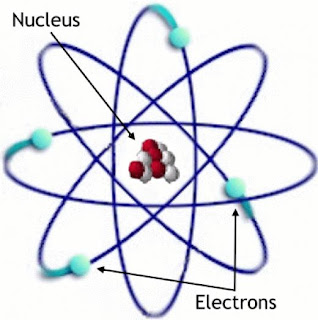Electron
An electron is a negatively charged subatomic particle. It can be either free (not attached to any atom), or bound to the nucleus of an atom. Electrons in atoms exist in spherical shells of various radii, representing energy levels. The larger the spherical shell, the higher the energy contained in the electron.
In electrical conductors, current flow results from the movement of electrons from atom to atom individually, and from negative to positive electric poles in general. In semiconductor materials, current also occurs as a movement of electrons. But in some cases, it is more illustrative to envision the current as a movement of electron deficiencies from atom to atom. An electron-deficient atom in a semiconductor is called a hole. Holes "move" from positive to negative electric poles in general.
The charge on a single electron is considered as the unit electrical charge. It is assigned negative polarity. The charge on an electron is equal, but opposite, to the positive charge on a proton or hole. Electrical charge quantity is not usually measured in terms of the charge on a single electron, because this is an extremely small charge. Instead, the standard unit of electrical charge quantity is the coulomb, symbolized by C, representing about 6.24 x 1018electrons. The electron charge, symbolized by e, is about 1.60 x 10-19 C. The mass of an electron at rest, symbolized me, is approximately 9.11 x 10-31 kilogram (kg). Electrons moving at an appreciable fraction of the speed of light, for example in a particle accelerator, have greater mass because of relativistic effects.



































